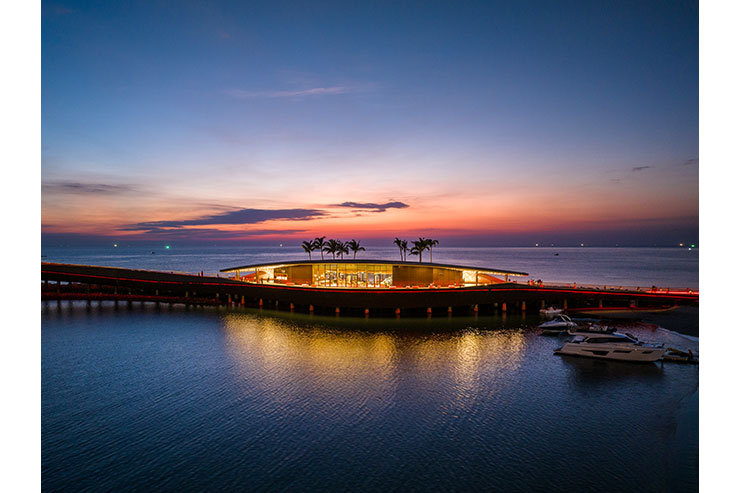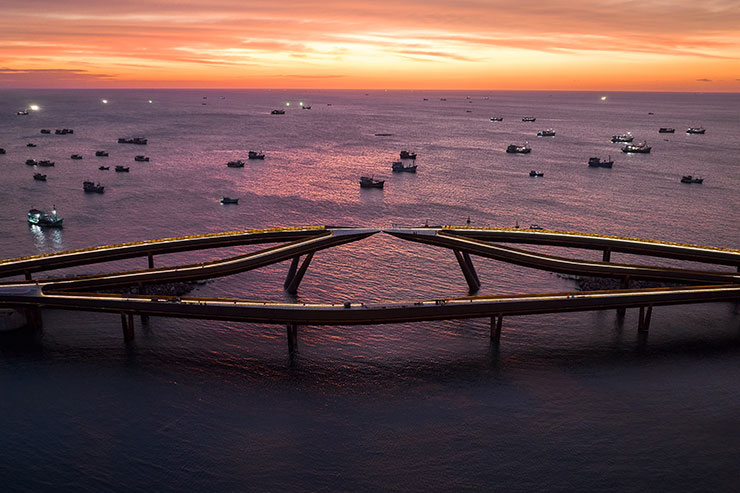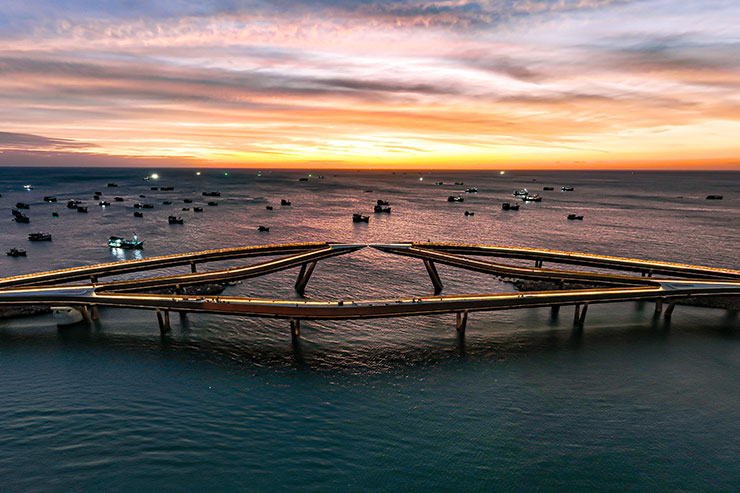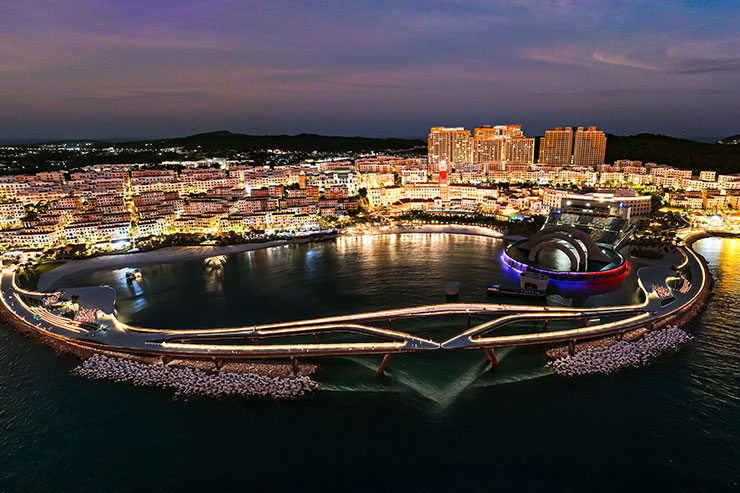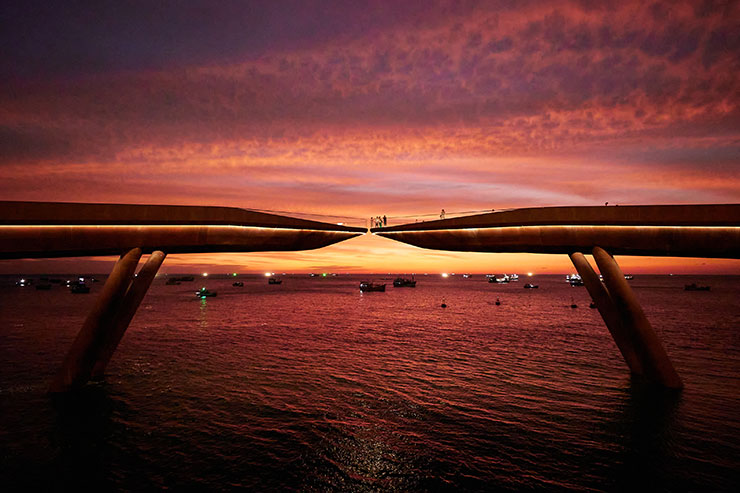- ABOUT
- JUDGING
- CONTACT
- MORE
- 2024 Entries
- Installations 2024
- Past Winners
- Subscribe
- [d]arc directory
- arc magazine
- darc magazine
Kiss Bridge, Vietnam
ProjectKiss BridgeLocationPhu Quoc, VietnamLighting DesignLAPD Lighting Design, UKArchitectArchea Associati, ItalyAdditional DesignStructural & M&E Engineers: F&M IngegneriaLighting SuppliersOsram, Ghidini
Kiss Bridge was born from architect, Marco Casamonti’s reflection on the concept of connection. At the outermost point of this bridge, there is no physical link. Instead, this superstructure aims to create connection via emotion between people with a desire to meet, unite and kiss.
The lighting for this iconic structure needed to provide impact and align with the architect’s concept of connection, but also be considerate to the surrounding ecology.
Lighting is integrated within the handrail to provide functional, warm, white light along the entire length of the bridge. A detail was created that ensures the flexible light source is hidden but also allows enough spread to achieve the minimum requirement of 5 lux on the centre of the bridge. At low level another flexible light source was hidden to enhance way-finding and to enable some dynamic and coloured light to be introduced at timed moments during the evening.
On the outside of the bridge envelope another line of light was integrated with a much lower output to minimise spill light into the sea. The palette of colour was restricted by the control system to minimise disruption to aquatic life. All three linear light sources ensured there was no direct light into the night sky.
The concept of capturing special moments on the bridge was enhanced by a dynamic control system that activated some timed events every hour, akin to a clock chime. Pulses of light around the envelope of the bridge accentuate its curvature and scale and converge at the kissing point with brief moments of increased brightness. The pulse was mimicked on the low level light source to ensure the dynamic effects were experienced by people on and off the bridge.
Coloured light was also automated within the controls to symbolise different national holidays in Vietnam. These events changed the colour of different parts of the bridge for the duration of the festival. The timed events still happened.
During the day-to-day dynamic events and the annual festivals, the white light within the handrail remained constant to ensure a stable light level across the bridge at all times.
Two large restaurants were located at each end of the bridge. The underside of their gently sloping canopies were used to house a number of miniature light sources of different diameter simulating a starry sky. All the lights used a narrow beam distribution to keep glare to a minimum and to avoid any direct light escaping into the water. Extremely low output lighting was located on the topside of the restarant, highlighting the slope from ground level to full ceiling height for passers by. These are used only when an event is taking place in the neighbouring arena (lit by others) and remain off to reduce upward light.
Lighting was integrated into the seating steps within a narrow detail that restricted light going above the horizontal plane and escaping from the bridge into the night sky. Further measures were taken to reduce stray light by using the control system to reduce outputs on any lights that posed an issue. Uplights were used at the Kiss point, only turned on to harmonise with the timed ‘moments’, theatrically highlighting whoever is at the kissing point at the time.
